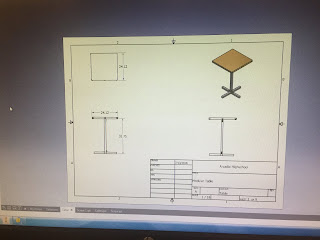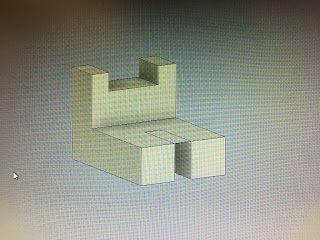Day 15 Intro to Engineering Allen Sam 7-3-18 Activities 7.3 and 7.4 7.3 Tolerances 1. Study the drawings below to identify specified tolerances. a. Highlight each dimension that has a tolerance associated with it using something like a highlight marker. b. Identify the type of tolerance in each highlighted example by labeling each tolerance dimension with one of the following: limit dimensions, unilateral tolerance, or bilateral tolerance. c. Label each identified tolerance with a separate letter, A through Z. d. Beginning on a new page in your engineering notebook for each part, record the letter of each tolerance identified on that part drawing, the type of tolerance, a short written phase that describes the dimensional variation allowed for that dimension, the tolerance (a number representing the t...
Popular posts from this blog
Day 13 Intro to Engineering Allen Sam 6-28-18 Activity 5.6a Aluminum Object Example 1 1. What is the volume of the part? A. 1.875 in.³ B. 1.125 in.³ C. 1.375 in.³ D. 2.125 in.³ c.1.375 2. What is the density of aluminum in grams per cubic centimeter? (This may require research. Be sure to document your source.) 2.700g/cm^3 3. ...
Activities
Day 1 Intro to engineering Allen Sam 6-11-18 Activity 1.3 Concept Sketching Sketches for #1 Sketches for #2 Sketch for #3 Sketch for #4 Conclusion 1. Proportion is a ratio of a model object to a real life one. Proportions help us recreate accurately sized objects, and sketching is one way to create a proportion, or at least a somewhat accurate ratio. 2. The ability to sketch helps a designer by letting the designer explore not only the outline of a model object, but also some of the texture and shading. And, the sketch will keep a designer's ideas written on paper instead of just in the mind. 3. A bar graph or pie chart can have more impact than information text because they can directly compare the results. 4. I think that the most important part to know in order to sketch is to get the outline. The shading and little details can come later, but the sketch represents the idea. Activity 1.4 Product Improvement list o...












Comments